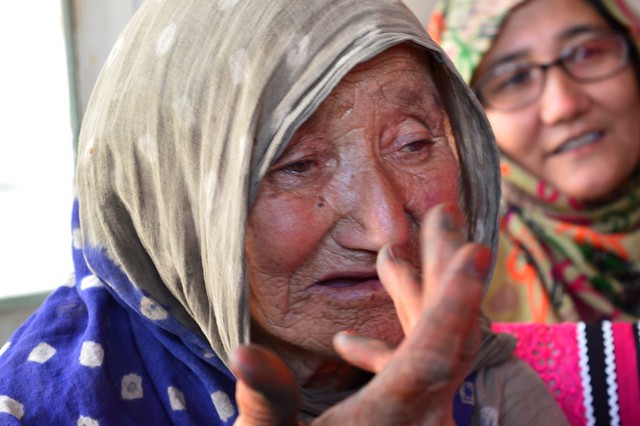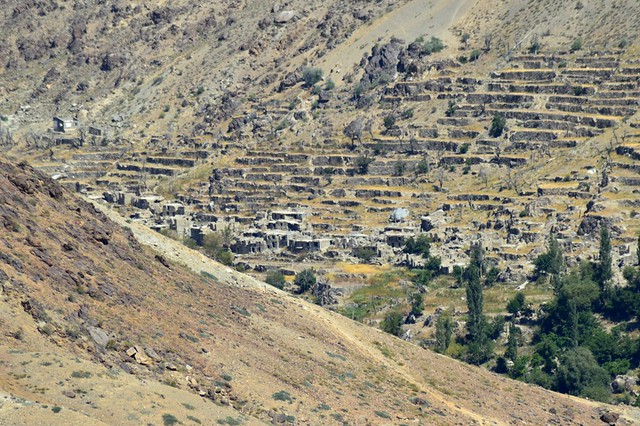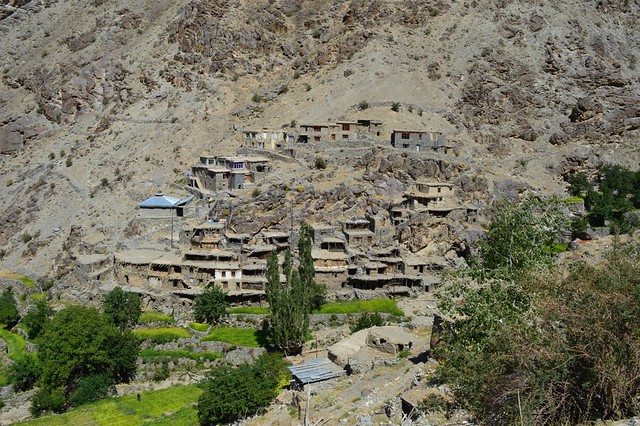By Raqib Hameed Naik, TwoCircles.net
Hunderman Brok (Kargil) : A barbed wire can often represent the idea of security, but never the idea of peace. Ask Zainabi, an octogenarian woman who lives by the sight of barbed wires every day. The barbed wire in this case divides the families along the Line of Control. Given that this border remains one of the most volatile international boundaries between two nations, Zainabi’s simple wish—of meeting her family members across the border on a regular basis–might never materialize. Not that she can do much about it, for this is a grief that binds the families on both sides of a border that has torn apart countless lives.
The 1971 India-Pakistan war gave birth to Bangladesh, but lesser known is the pain of the families living on both sides of the LOC. The families living in the Kargil-Skardu region were separated: Zainabi, from her mother, brothers and sisters who lived in Brolmo village, which became a part of Pakistan-Administered Kashmir while her Village, Hunderman Brok, was taken over by the Indian forces.
Hunderman Brok is a dusty, ordinary Himalayan village, but it occupies an important place in the region’s history. Once known as the resting ground for travelers on the historic Silk route between Kargil and Skardu, the village’s current claim to fame is less spectacular: it houses the last forward post from the J&K side on Line of Control between Pakistan and India in Kargil. The village is nine kms uphill from the main Kargil town. Most men in this village work as porters for the Indian Army, while other economic activities include animal grazing and growing Apricots.
Over the past fifty years, India and Pakistan have been playing musical chairs with this village: Indian Army wrested it from Pakistan in 1965, only to ‘return’ it to them post the Tashkent Agreement in 1966. Later in 1971 it was re-captured and retained by Indian Army. No wonder then, that residents of this village talk of a time when things were less complicated. “We used to live peacefully with our relatives who lived in Brolmo village, just four kms from our village. But the 1971 war between India and Pakistan changed everything for us and brought miseries in our life by separating our blood relatives,” recollects Zainabi as tears roll down her cheeks.

Twenty years ago, Zainabi went to Pakistan via Wagah border in Punjab to meet her relatives in Skardu. It takes little to imagine the cost of this perilous journey, for the mere sight of her relatives and to add some more memories. She knew should be unable to do the journey again. “I spent my life savings on Passport and tickets, so that I can go to Pakistan to meet my relatives. When they got site of me we all started crying and hugging each other like we were meeting after centuries of separation. But unfortunately, the happiness was short-lived as my visa was limited for some weeks.” she adds.
The Balti-speaking Brolmo village across the LOC on Pakistan side was named after a European, known as Mr Brilmin who had his villa here in the pre-partition era. Most of the relatives of Hunderman residents lived in Brolmo, but in 1971 war India wrested Hunderman and Brolmo stayed in Pakistan. Brolmo was vacated in 1999 war to house the Pakistan army and the villagers moved to Skardu for a better life.

“My sister died some years ago due to brief illness but I could not attend her funeral. The months following her funeral I used to cry every day cursing these borders,” says Zainabi while gazing out at the Indian border post on the other mountain which is visible through her window: a monotonous, silent view of barbed wires.
Zaharabi, also an octogenarian, shares the same story: she got separated from her brothers and sisters during 1971 war. All of them are presently in Gilgit area of Pakistan Administered Kashmir. Unlike Zainabi, Zahrabi couldn’t save enough to visit her relatives on the other side. “After we were separated, I have never seen their faces neither I could visit them because I don’t have that much money to make a passport and spend on expenses of travel. The only thing which I can do is pray. Every day I pray to Allah to open up the Kargil – Skardu Route,” says Zahrabi.
Skardu, on the Pakistan side, is just 173 kms, or a seven-hour ride, from Kargil on the Indian Side. The Kargil-Skardu route, often called as silk route, was once significant for intra-regional trade on which the local economy depended. The all-weather road witnessed the movement of people and goods from Tibet to Central Asia through Kargil, Leh, Skardu and Gilgit for centuries.

It is not as if the divided families have not turned to their respective governments to reopen the routes so that they could meet their dear ones separated from them during the 1948 and 1971 wars. However, expectedly, both the governments have remained lackadaisical about giving a green signal to the idea.
Maqsoma, another resident of Hunderman and a newly-wedded bride, had little to celebrate during the joyous occasion. “My marriage was marked with silence as there was no relative of mine who could sing or celebrate the day. Without our families around us, we have forgotten what happiness looks like,” Maqsoma told TwoCircles.net.
Although this side of the border has been relatively peaceful, the people of Hunderman live in the fear of another war breaking out due to the frequent cross border ceasefire violations in the Jammu division. The villages have their own emergency evacuation drill: “We have identified a big cave which we used in 1999 war. That cave saved us all from getting killed. In case a war breaks out again, we all will go and hide in the cave,” says Mohammad Ali, a resident of the village.

According to an estimate, there are around 8,000 divided families across Line of Control (LOC) and Line of Actual Control (LAC) in Ladakh region of Jammu and Kashmir. The divided families have to use Wagah border to meet their loved ones, which not only costs them considerable amount of time, but also money, which they couldn’t afford. A seven hour drive from Kargil to Skardu, which would have cost a couple of hundred rupees, is transformed into challenging journey of a week through Wagah border in Punjab costing upwards of Rs 50,000.
No wonder, then, why even now, Zainabi vividly remembers every moment she spent with her relatives across the border. “Meeting our loved ones for some days and then separating again is like going through death and I am sure that this separation will be cause of my death,” Zainabi adds. For the time being, she hopes her prayers and her curses to the barbed wire might have some impact.
(All Photos by : Raqib Hameed Naik/TCN)
(TCN extends its gratitude to Non Government Organization, Ehsaas and its Secretary, Ezabir Ali for inviting us to document the pain of divided families in Hunderman, Kargil.)

